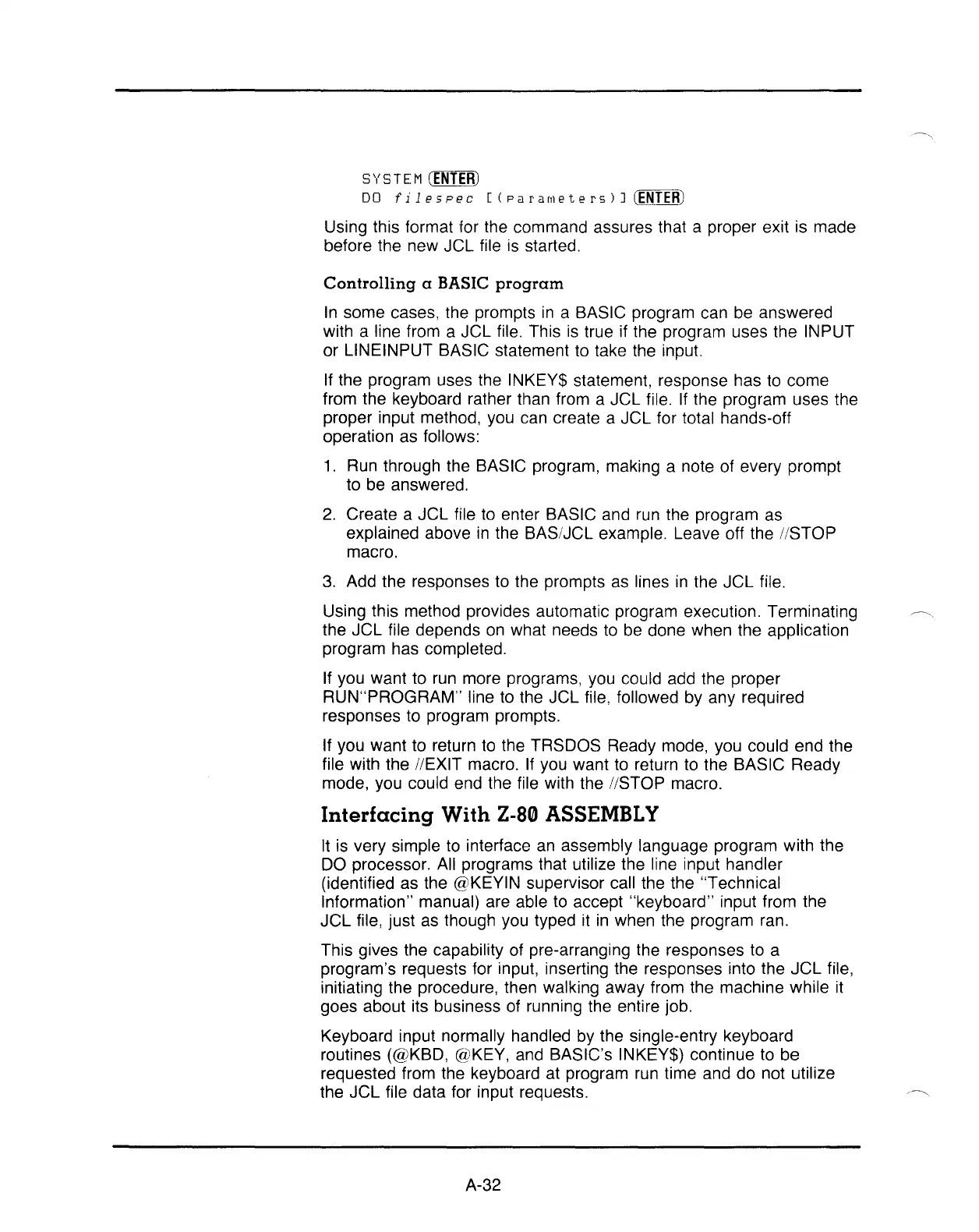SYSTEM
(ENTER)
DO
f i 1 e 5
pee
[(
par
a
{Tl
e t e r s ) ]
(ENTER)
Using this format for the command assures that a proper exit is made
before the new JCL file is started.
Controlling
a BASIC
program
In
some cases, the prompts
in
a BASIC program can be answered
with a line from a JCL file. This
is
true if the program uses the INPUT
or L1NEINPUT BASIC statement to take the input.
If the program uses the INKEY$ statement, response has to come
from the keyboard rather than from a JCL file. If the program uses the
proper input method, you can create a JCL for total hands-off
operation as follows:
1.
Run through the BASIC program, making a note of every prompt
to be answered.
2.
Create a JCL file to enter BASIC and run the program as
explained above
in
the BAS/JCL example. Leave off the
IISTOP
macro.
3.
Add the responses to the prompts as lines
in
the JCL file.
Using this method provides automatic program execution. Terminating
~
..
the JCL file depends
on
what needs to be done when the application
program has completed.
If you want to run more programs, you could add the proper
RUN"PROGRAM" line to the JCL file, followed by any required
responses to program prompts.
If you want to return to the TRSDOS Ready mode, you could end the
file with the
IIEXIT macro. If you want to return to the BASIC Ready
mode, you could end the file with the
IISTOP macro.
Interfacing
With
Z-80
ASSEMBLY
It is very simple to interface
an
assembly language program with the
DO processor. All programs that utilize the line input handler
(identified as the @KEYIN supervisor call the the "Technical
Information" manual) are able to accept "keyboard" input from the
JCL
file, just as though you typed
it
in
when the program ran.
This gives the capability of pre-arranging the responses to a
program's requests for input, inserting the responses into the
JCL
file,
initiating the procedure, then walking away from the machine while
it
goes about its business of running the entire job.
Keyboard input normally handled by the single-entry keyboard
routines (@KBD, @KEY, and BASIC's INKEY$) continue to be
requested from the keyboard at program run time and do not utilize
the JCL file data for input requests.
A-32

